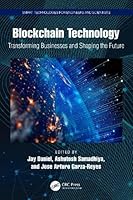
Non-Gaussian Statistical Communication Theory
- Length: 664 pages
- Edition: 1
- Language: English
- Publisher: Wiley-IEEE Press
- Publication Date: 2012-05-29
- ISBN-10: 0470948477
- ISBN-13: 9780470948477
- Sales Rank: #5192184 (See Top 100 Books)
Non-Gaussian Statistical Communication Theory (IEEE Series on Digital & Mobile Communication)
The book is based on the observation that communication is the central operation of discovery in all the sciences. In its “active mode” we use it to “interrogate” the physical world, sending appropriate “signals” and receiving nature’s “reply”. In the “passive mode” we receive nature’s signals directly. Since we never know a prioriwhat particular return signal will be forthcoming, we must necessarily adopt a probabilistic model of communication. This has developed over the approximately seventy years since it’s beginning, into a Statistical Communication Theory (or SCT). Here it is the set or ensemble of possible results which is meaningful. From this ensemble we attempt to construct in the appropriate model format, based on our understanding of the observed physical data and on the associated statistical mechanism, analytically represented by suitable probability measures.
Since its inception in the late ’30’s of the last century, and in particular subsequent to World War II, SCT has grown into a major field of study. As we have noted above, SCT is applicable to all branches of science. The latter itself is inherently and ultimately probabilistic at all levels. Moreover, in the natural world there is always a random background “noise” as well as an inherent a priori uncertainty in the presentation of deterministic observations, i.e. those which are specifically obtained, a posteriori.
The purpose of the book is to introduce Non-Gaussian statistical communication theory and demonstrate how the theory improves probabilistic model. The book was originally planed to include 24 chapters as seen in the table of preface. Dr. Middleton completed first 10 chapters prior to his passing in 2008. Bibliography which represents remaining chapters are put together by the author’s close colleagues; Drs. Vincent Poor, Leon Cohen and John Anderson.
email [email protected] to request Ch.10
Table of Contents
1 Reception as a Statistical Decision Problem 15
2 Space-Time Covariances and Wave Number Frequency Spectra: I. Noise and Signals with Continuous and Discrete Sampling 77
3 Optimum Detection, Space-Time Matched Filters, and Beam Forming in Gaussian Noise Fields 141
4 Multiple Alternative Detection 239
5 Bayes Extraction Systems: Signal Estimation and Analysis, p(H1) = 1 271
6 Joint Detection and Estimation, p(H1) ≤ 1: I. Foundations 307
7 Joint Detection and Estimation under Uncertainty, pk(H1) < 1.
II. Multiple Hypotheses and Sequential Observations 381
8 The Canonical Channel I: Scalar Field Propagation in a Deterministic Medium 435
9 The Canonical Channel II: Scattering in Random Media; “Classical” Operator Solutions 539







